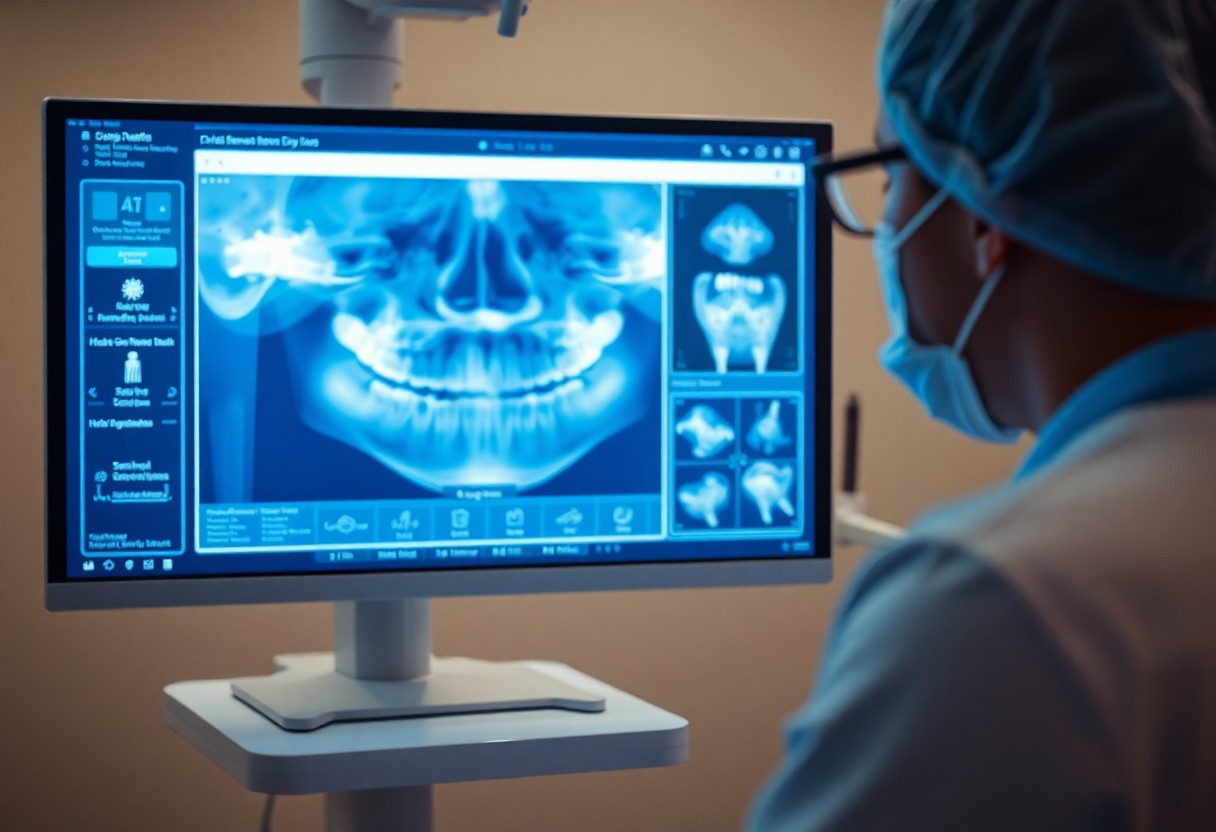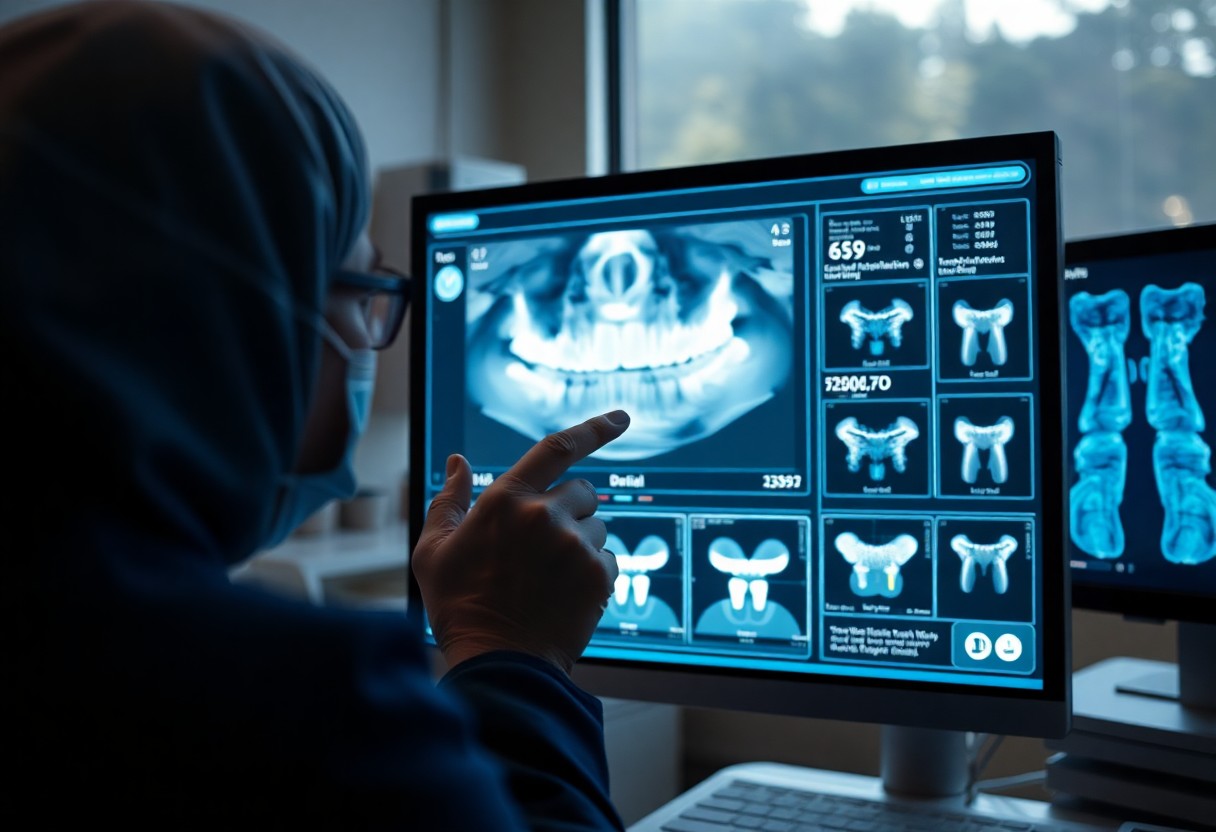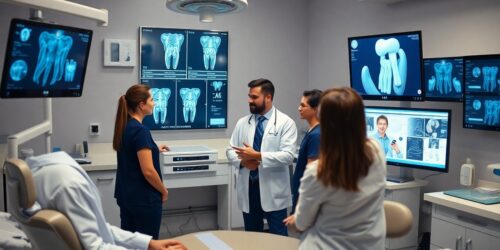Enhancing Diagnostic Precision – How Dental AI Is Changing X-ray Interpretation
Over the past few years, integrating artificial intelligence into dental practices has significantly improved the accuracy of X-ray interpretation. This evolving technology allows you to detect early signs of dental issues that might otherwise go unnoticed, ultimately leading to better patient outcomes. By utilizing AI tools, you can enhance your diagnostic capabilities, reduce the risk of misdiagnosis, and increase your practice’s efficiency. As you adapt to these advancements, the precision of your assessments will not only benefit your patients but also bolster your confidence in clinical decision-making.
Key Takeaways:
- Increased Accuracy: Dental AI enhances X-ray interpretation by significantly reducing human error, resulting in more precise diagnoses.
- Efficiency Improvement: AI algorithms streamline the X-ray reading process, allowing dental professionals to spend less time on analysis and more on patient care.
- Enhanced Detection: Advanced AI tools can identify subtle anomalies that may be overlooked by the human eye, such as early signs of decay or periodontal disease.
- Data-Driven Insights: Dental AI utilizes large datasets to provide evidence-based recommendations, improving the overall decision-making process in treatment planning.
- Continuous Learning: Machine learning capabilities enable AI systems to evolve and improve over time, adapting to new dental research and techniques for better outcomes.
The Role of AI in Dental Imaging
Before the advent of technology, dental imaging relied heavily on the skill and experience of practitioners. Today, Artificial Intelligence (AI) is transforming this process, providing enhanced diagnostic accuracy and efficiency. By analyzing dental images with impressive speed and precision, AI tools assist you in identifying issues that may have been overlooked, thereby elevating the standard of care you can offer to your patients.
Overview of Dental X-rays
Overview of dental X-rays reveals they are vital tools for diagnosing oral health issues. These images provide detailed visualizations of the teeth, gums, and surrounding structures, allowing you to detect cavities, infections, and other anomalies that may not be visible during a routine examination.
AI Algorithms in Image Processing
Against traditional methods, AI algorithms enhance the interpretation of dental X-rays significantly. These intelligent systems are designed to analyze patterns and anomalies more effectively than the human eye, thus enabling you to obtain accurate readings and diagnoses.
But AI algorithms go beyond simple pattern recognition; they utilize deep learning techniques to continuously improve their accuracy. This capability allows you to leverage advanced tools that can highlight potential cavities, fractures, and periodontal disease risks with remarkable reliability. Additionally, the speed of image evaluation means quicker client consultations, helping you to provide timely treatment options. The integration of AI not only enhances the precision of diagnostics but also streamlines your workflow, making your practice more efficient and patient-friendly.

Benefits of AI in X-ray Interpretation
While the integration of AI in X-ray interpretation presents numerous advantages, the most significant benefit lies in its ability to enhance diagnostic precision, leading to better patient outcomes. AI algorithms can analyze images with an impressive level of detail, allowing for quicker diagnoses and more tailored treatment plans. This technology empowers you, as a dental professional, to make informed decisions and improve your practice’s efficiency.
Improved Accuracy and Early Detection
Below the surface, AI enhances the accuracy of X-ray readings by utilizing advanced algorithms to identify subtle changes that may indicate underlying issues. This capability enables you to detect problems at an early stage, significantly improving patient prognosis and treatment efficacy.
Reduction of Human Error
Across the board, AI technologies minimize the likelihood of misdiagnoses by providing a reliable second opinion. This is particularly important given the complexity of dental conditions which can often lead to oversight.
But the reduction of human error is not merely about preventing misdiagnoses; it also has significant implications for patient safety. AI systems can analyze multiple factors that may influence a diagnosis, thus compensating for fatigue, distractions, or subjective bias that you might experience during regular clinical practice. By harnessing AI, you enhance diagnostic consistency, which ultimately leads to safer treatment plans and higher patient confidence in your care. This seamless integration fosters a more effective collaboration between human expertise and machine learning, ensuring that you provide the best possible care for your patients.

Case Studies: AI Success in Clinical Settings
Despite the initial skepticism around AI in dentistry, numerous case studies validate its effectiveness in enhancing diagnostics. Some notable examples include:
- University of California, San Francisco: Implemented AI algorithms that improved X-ray interpretation accuracy by 30%.
- Mount Sinai Hospital: Reported a 40% reduction in misdiagnosed cavities using AI-enhanced dental imaging.
- Harvard Dental School: Found AI-assisted diagnoses to have an 85% accuracy rate compared to 75% with traditional methods.
Real-World Applications
An evolving landscape of real-world applications demonstrates how AI is transforming dental practices. Clinics that have adopted AI tools for X-ray interpretation have noted increased efficiency and improved patient outcomes, showcasing a more precise diagnostic process that significantly boosts trust between you and your dental healthcare provider.
Enhancements in Diagnostic Workflows
Besides improving diagnostic accuracy, AI technologies streamline workflows in dental practices. Algorithms can rapidly analyze X-rays, flagging abnormalities for your dentist’s review, which enhances the speed and precision of diagnosis.
Further, this integration of AI into dental workflows allows you to receive quicker results and more personalized treatment plans. AI systems systematically eliminate potential errors during the diagnostic phase, ensuring that no critical issues go unnoticed. By providing detailed insights and streamlining communication between you and your dental team, AI fosters a more effective and reliable diagnostic experience, ultimately enhancing your oral health and satisfaction with care.

Challenges and Limitations of Dental AI
Once again, while dental AI offers transformative potential in X-ray interpretation, there are significant challenges and limitations that need addressing. The technology is still developing, and issues related to accuracy, data security, and the need for continuous training of algorithms pose risks to reliable integration in dental practices. Your understanding of these challenges is vital as you navigate the evolving landscape of dental diagnostics.
Data Quality and Bias Concerns
Among the primary challenges facing dental AI is the issue of data quality and inherent bias. The effectiveness of AI algorithms heavily relies on the datasets used for training. If the data lacks diversity or exhibits bias, it can result in skewed interpretations that may negatively impact patient care.
Integration with Existing Practices
The integration of dental AI with existing practices presents another set of challenges. Many dental offices still rely on traditional methods for X-ray analysis, and changing established routines can be met with resistance. Your willingness to adapt and incorporate AI technology is imperative for maximizing its benefits.
Considering the significant investments required for implementing dental AI, you must weigh the benefits against potential disruptions. The transition involves not just the acquisition of technology, but also training staff, updating protocols, and ensuring that patient data is securely managed. Successful integration fosters a collaborative environment where AI enhances your diagnostic capabilities, leading to improved patient outcomes. Embracing change can position your practice at the forefront of dental innovation, ultimately providing enhanced care that meets modern demands.
Future Directions for AI in Dentistry
Now, as dental professionals grapple with an influx of data, the future of AI in dentistry aims to simplify and enhance workflow efficiencies. You can expect innovative algorithms that not only streamline diagnostics but also incorporate patient histories and preferences to revolutionize the standard of care. The melding of AI with big data will likely offer deeper insights, paving the way for improved treatment outcomes and more personalized experiences for your patients.
Innovations on the Horizon
After examining current AI capabilities, you can anticipate innovations that leverage machine learning and deep neural networks to assess X-rays with unprecedented accuracy. These innovations may include real-time decision support systems that provide instant feedback during patient consultations, enhancing your diagnostic precision and enabling proactive treatment strategies.
Potential for Personalized Dental Care
Across the dental landscape, the potential for AI to facilitate personalized care is immense. By analyzing your patients’ unique dental profiles and health histories, AI can help you create tailored treatment plans that address their specific needs and preferences.
Care can be optimized through AI’s ability to deliver predictive analytics, allowing you to identify potential oral health issues before they escalate. This means that early interventions can be implemented, enhancing the quality of care you provide. Utilizing AI-driven insights, you can better align treatment plans with your patients’ lifestyles, improving adherence and satisfaction. Moreover, personalized recommendations, ranging from preventive measures to treatment options, can lead to more engaged patients who feel their specific needs are being met in a proactive manner.
Final Words
Drawing together the advancements in dental AI, you can see how these technologies are actively transforming X-ray interpretation. By leveraging machine learning algorithms, you can achieve enhanced diagnostic precision, leading to improved patient outcomes. Embracing these innovations will not only streamline your workflow but also empower you to make more informed decisions in your practice. The future of dental diagnostics is bright, and incorporating AI into your routine can keep you at the forefront of this exciting evolution.
FAQ
Q: What is dental AI, and how is it applied in X-ray interpretation?
A: Dental AI refers to artificial intelligence technologies specifically designed to assist dental professionals in various tasks, including X-ray interpretation. These systems use machine learning algorithms to analyze X-ray images, detect abnormalities, and provide insights to enhance diagnostics. By processing vast amounts of data, AI can identify patterns that may be overlooked by human eyes, leading to more accurate assessments of dental conditions.
Q: How does AI improve the accuracy of dental X-ray interpretations?
A: AI enhances accuracy by utilizing advanced algorithms trained on extensive datasets of dental X-rays. These algorithms can identify minuscule features within images, which may indicate issues such as cavities, bone loss, or other dental anomalies. As a result, AI can assist dentists in making more informed treatment decisions by highlighting problematic areas that might not be immediately visible.
Q: Are there specific dental conditions that AI is better at detecting compared to traditional methods?
A: Yes, research has shown that AI can be particularly effective in detecting conditions like caries (tooth decay), periodontal disease, and fractures. The consistency and precision of AI assessments may lead to earlier detection of these issues, potentially resulting in better outcomes for patients. Furthermore, AI’s ability to reduce human error in interpretation makes it a valuable tool in the diagnostic process.
Q: What are the potential benefits of using AI in dental X-ray interpretation for patients?
A: The utilization of AI in dental X-ray interpretation offers several benefits for patients, including improved diagnostic accuracy, faster identification of dental issues, and personalized treatment planning. Additionally, by reducing the risk of overlooked conditions, AI contributes to better overall dental health outcomes, promoting preventive care and timely interventions.
Q: How does the integration of AI into dental practices affect the role of dental professionals?
A: The integration of AI into dental practices does not replace dental professionals but rather reinforces their expertise. Dentists can leverage AI as a supportive tool to enhance their diagnostic capabilities. This partnership allows for more comprehensive patient assessments, improved efficiency in clinical workflows, and the potential for ongoing education through AI-generated insights.
Q: Are there any limitations or challenges associated with using AI in dental X-ray interpretations?
A: While AI offers promising advancements, there are limitations and challenges. One major concern is the need for high-quality data and diverse datasets to train these AI systems effectively. Additionally, dental professionals must be aware of the AI’s limitations and should not solely rely on technology for clinical decisions. Continuous evaluation and integration of AI alongside clinical judgment is important to ensure the highest care standards.
Q: What does the future hold for dental AI technology in X-ray interpretation?
A: The future of dental AI technology in X-ray interpretation is bright, with ongoing advancements expected in machine learning and imaging technology. We can anticipate further improvements in diagnostic accuracy, the development of more sophisticated algorithms, and broader acceptance of AI in dental practices. As research continues and technology evolves, dental AI will likely play an increasingly prominent role in enhancing patient care and streamlining clinical processes.




